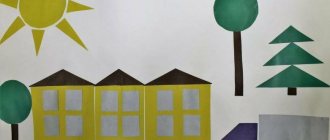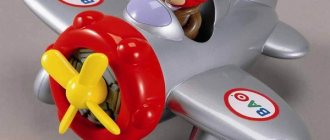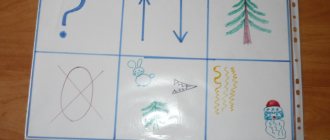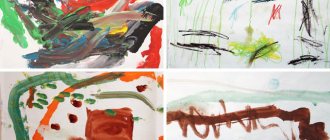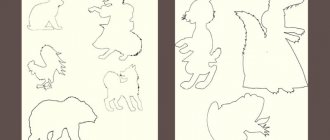Model of health-saving technologies in preschool educational institutions
Klimova O.I. Model of health-saving technologies in preschool educational institutions // Sovushka. 2022. N2 (16). URL: https://kssovushka.ru/zhurnal/16/ (access date: 02/05/2022).
Order No. 316260
Technology is, first of all, a systematic method of creating, applying and defining the entire process of teaching and learning, taking into account technical and human resources and their interaction, with the goal of optimizing forms of education (UNESCO).
Health-saving technology is a system of measures that includes the interrelation and interaction of all factors of the educational environment aimed at preserving the health of a child at all stages of his learning and development. The concept of preschool education provides for not only the preservation, but also the active formation of a healthy lifestyle and the health of pupils.
Health is a state of complete physical, mental and social well-being and not merely the absence of disease or infirmity (WHO).
Physical health is the perfection of self-regulation in the body, maximum adaptation to the environment.
Physical activity is a natural need for a healthy, developing body to move (in childhood it acts as a prerequisite for the child’s mental development).
Mental health is a high consciousness, developed thinking, great internal and moral strength that encourages creative activity.
Mental activity is the need of a normally developing child to understand the surrounding life: nature, human relationships; in knowing yourself.
Health-saving educational technologies are the most significant among all known technologies in terms of the degree of influence on children’s health. Their main feature is the use of psychological and pedagogical techniques, methods, and approaches to solving emerging problems.
Modern health-saving technologies
| Types of health-saving pedagogical technologies | Time spent in the daily routine | Features of the methodology | Responsible |
| 1. Technologies for preserving and promoting health | |||
| Stretching | Not earlier than in 30 minutes. after meals, 2 times a week for 30 minutes. from middle age in physical education or music halls or in a group room, in a well-ventilated area | Recommended for children with sluggish posture and flat feet. Beware of disproportionate stress on muscles | Head of Physical Education |
| Rhythmoplasty | Not earlier than in 30 minutes. after meals, 2 times a week for 30 minutes. from middle age | Pay attention to the artistic value, the amount of physical activity and its proportionality to the age of the child | Head of physical education, music director, preschool teacher |
| Dynamic pauses | During classes 2-5 minutes, as children get tired | Recommended for all children as a preventive measure against fatigue. May include elements of eye exercises, breathing exercises and others, depending on the type of activity | Educators |
| Outdoor and sports games | As part of a physical education class, on a walk, in a group room - small with an average degree of mobility. Daily for all age groups | Games are selected according to the age of the child, the place and time of the game. In preschool educational institutions we use only elements of sports games | Teachers, head of physical education |
| Relaxation | In any suitable room. Depending on the condition of the children and goals, the teacher determines the intensity of the technology. For all age groups | You can use calm classical music (Tchaikovsky, Rachmaninov), sounds of nature | Teachers, head of physical education, psychologist |
| Aesthetic technologies | Implemented in artistic and aesthetic classes, when visiting museums, theaters, exhibitions, etc., decorating premises for holidays, etc. For all age groups | It is carried out in classes according to the preschool educational program, as well as according to a specially planned schedule of events. Of particular importance is working with families, instilling aesthetic taste in children | All preschool teachers |
| Finger gymnastics | From a young age, individually or with a subgroup daily | Recommended for all children, especially those with speech problems. Conducted at any convenient time (at any convenient time) | Teachers, speech therapist |
| Gymnastics for the eyes | Every day for 3-5 minutes. at any free time; depending on the intensity of visual load from a young age | It is recommended to use visual material, demonstration by the teacher | All teachers |
| Breathing exercises | In various forms of physical education and health work | Ensure the room is ventilated and the teacher give children instructions on mandatory nasal hygiene before the procedure. | All teachers |
| Invigorating gymnastics | Every day after nap, 5-10 min. | The form of implementation is different: exercises on beds, extensive washing; walking on ribbed planks; easy running from the bedroom to a group with a difference in temperature in the rooms and others depending on the conditions of the preschool educational institution | Educators |
| Corrective gymnastics | In various forms of physical education and health work | The form of implementation depends on the task and the number of children | Teachers, head of physical education |
| Orthopedic gymnastics | In various forms of physical education and health work | Recommended for children with flat feet and as a preventive measure for diseases of the supporting arch of the foot. | Teachers, head of physical education |
| 2. Technologies for teaching a healthy lifestyle | |||
| Physical education lesson | 2-3 times a week in the gym or music hall. Early age - in a group room, 10 min. Younger age - 15-20 minutes, middle age - 20-25 minutes, older age - 25-30 minutes. | Classes are conducted in accordance with the program according to which the preschool educational institution operates. Before class, the room must be well ventilated. | Teachers, head of physical education |
| Problem-based games (game training and game therapy) | In your free time, maybe in the afternoon. Time is not strictly fixed, depending on the tasks set by the teacher | The lesson can be organized unnoticed by the child by including the teacher in the process of play activities | Teachers, psychologist |
| Communication games | 1-2 times a week for 30 minutes. from an older age | Classes are structured according to a specific scheme and consist of several parts. They include conversations, sketches and games of varying degrees of mobility, drawing, modeling, etc. | Teachers, psychologist |
| Lessons from the “Health” series | Once a week for 30 minutes. from Art. age | Can be included in the lesson schedule as cognitive development | Educators, head of physical education, teacher-valeologist |
| Self-massage | Depending on the goals set by the teacher, sessions or in various forms of physical education and health work | It is necessary to explain to the child the seriousness of the procedure and give children basic knowledge of how not to harm their body | Educators, Art. nurse, head of physical education |
| Acupressure self-massage | Conducted on the eve of epidemics, in the autumn and spring periods at any time convenient for the teacher from an older age | It is carried out strictly according to a special technique. Indicated for children with frequent colds and diseases of the ENT organs. Visual material is used | Educators, Art. nurse, head of physical education |
| Biofeedback (BFB) | From 10 to 15 sessions of working with a computer for 5-10 minutes. in a special room. Recommended for older adults | Compliance with computer rules is required. A special technique for preschoolers is recommended | Valeologist teacher, specially trained teacher |
| 3. Corrective technologies | |||
| Art therapy | Sessions of 10-12 lessons for 30-35 minutes. from middle group | Classes are conducted in subgroups of 10-13 people, the program has diagnostic tools and includes training protocols | Teachers, psychologist |
| Music influence technologies | In various forms of physical education and health work; or separate classes 2-4 times a month depending on your goals | Used as an aid as part of other technologies; to relieve stress, increase emotional mood, etc. | All teachers |
| Fairy tale therapy | 2-4 lessons per month for 30 minutes. from an older age | Classes are used for psychological therapeutic and developmental work. A fairy tale can be told by an adult, or it can be a group story, where the narrator is not one person, but a group of children | Teachers, psychologist |
| Color influence technologies | As a special lesson 2-4 times a month depending on the tasks | It is necessary to pay special attention to the color scheme of the interiors of preschool educational institutions. Properly selected colors relieve tension and increase a child’s emotional mood. | Teachers, psychologist |
| Behavior correction technologies | Sessions of 10-12 lessons for 25-30 minutes. from an older age | They are carried out using special methods in small groups of 6-8 people. Groups are not formed according to one criterion - children with different problems study in the same group. Classes are conducted in the form of a game, have diagnostic tools and training protocols | Teachers, psychologist |
| Psychogymnas-tika | 1-2 times a week from older age for 25-30 minutes. | Classes are conducted using special methods | Teachers, psychologist |
| Phonetic rhythm | 2 times a week from a young age, no earlier than every 30 minutes. after eating. In the physical education or music halls. Jr. age - 15 min., older age - 30 min. | Classes are recommended for children with hearing problems or for preventive purposes. The goal of the classes is phonetic literate speech without movements. | Teachers, head of physical education, speech therapist |
The use of health-saving pedagogical technologies in the work of preschool educational institutions will increase the effectiveness of the educational process, will form among teachers and parents value orientations aimed at preserving and strengthening the health of pupils, if conditions are created for the possibility of adjusting technologies, depending on the specific conditions and specialization of the preschool educational institution; if, based on statistical monitoring of children's health, the necessary amendments are made to the intensity of technological influences, an individual approach to each child is ensured; Positive motivation will be generated among preschool teachers and parents of children.
Forms of organizing health-saving work:
- physical education classes
- independent activities of children
- outdoor games
- morning exercises (traditional, breathing, sound)
- motor-health-improving physical training sessions
- exercise after nap
- physical exercises combined with hardening procedures
- physical exercise walks (to the park, to the stadium)
- physical education
- sports holidays
- health procedures in the aquatic environment.
Health-saving technologies used in combination ultimately form a strong motivation in the child for a healthy lifestyle.
